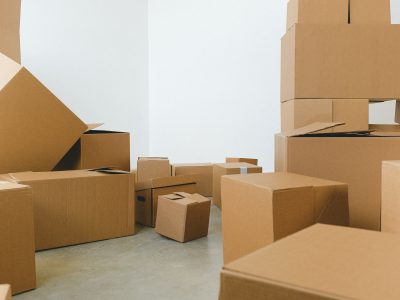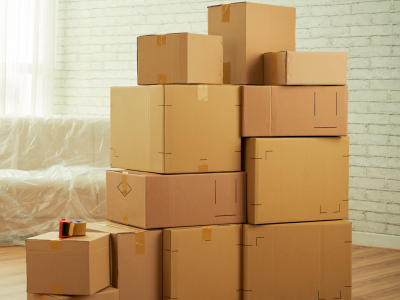
Are you thinking about downsizing? Not sure where to start? Maybe you are still on the fence, or maybe you’re ready to take the leap. Wherever you are in the decision making process, we’ve gathered our expert advice on everything you need to know about downsizing your house.
What is downsizing?
Downsizing refers to moving from a larger house, to a smaller one. This can mean a home with less square footage, a home with less land to take care of, or simply a house with fewer rooms.
Why downsizing house?
There are many advantages to downsizing. Take a look at some of the top reasons below.
To save or make money
If you already have your mortgage paid off on your current home, congrats! Especially for retirees, downsizing to a smaller home can be a great opportunity to increase or supplement monthly income. Not only that, moving to a smaller home can mean:
- lower mortgage payments
- cheaper home insurance
- lower utility bills
- lower property taxes
- lower monthly maintenance fees
In the case that you don’t have your mortgage paid off just yet, but have a decent amount of equity in your home, you may be able to sell, pay off your debt, and use your remaining equity as a down payment on a smaller property.
Insider tip: basic housing expenses like mortgage payments and utilities should cost no more than 25% – 35% of your annual monthly income.
Less maintenance
A larger home can be a lot of work. Everyday chores can be time consuming, overwhelming, and even costly. A smaller home can make life a lot easier. For those with mobility issues, downsizing can also mean a safer, and more enjoyable space for you to relax in.
You want a change of scenery
Maybe you’re looking to be closer to the city centre, or want to be closer to your family and friends. Finding a home in a new area can be challenging. Keeping in mind that real estate prices can vary quite a bit between boroughs, you might not be able to afford the same sized home in a new neighbourhood. Downsizing can allow you to finally live in your dream neighbourhood.
Too much space
How many rooms do you have that generally go unused? Are your spare bedrooms acting as storage? Too much space can invite clutter, unnecessary upkeep, and cleaning. Ask yourself how many times a year you host family and friends. If it’s not often, you may be holding on to your home for sentimental reasons instead of practical ones.
Not only that, if you have mobility issues, living in a larger home can be dangerous. Moving to a home with less stairs, or less square footage is a great solution for someone with physical challenges.
When should I proceed with my downsizing?
Although there’s no right or wrong time, people tend to begin the process when their children have grown up, or when they have a recent change in circumstances. Some examples include having to relocate for a new job, the need to be closer to a family member, or separation. Although it’s not necessary, you may also want to consider waiting to downsize until your current mortgage is paid off.
Downsizing house: how to do it?
We’ve gathered our best advice on how to start the process below.
Decide where you want to live, and in what kind of house
Do you want to stay in the same borough, move to the seaside, or buy a luxurious flat in the centre of town? Look at the type of properties that you see yourself living in, and of course, whether you can afford them. Don’t waste time or get your hopes up for a property that is not in your budget. Remember that downsizing doesn’t necessarily mean cheaper so make sure to get an accurate estimate on the value of your current property and only look at house that are equal to or less in value.
Prepare your house for selling
Before you put your house on the market, consider whether you need to make any improvements that might help it sell better.
Selling your house before buying a new one is the more practical solution for most people, but it’s not always the most convenient. Selling first is beneficial if you need to access your current house equity to buy your new house. However, selling first often requires temporary housing while buying your new house. Check out our article on buying a house in London for more information.
Consider the hidden costs of selling and purchasing a new house
There are quite a few costs involved in selling and buying a new house including:
- Stamp duty tax
- Estate agent
- Mortgage
- Broker fees
- Valuation fee (in the case that you will require a mortgage lender)
- Comprehensive building survey
- Legal fees and conveyancing
- Energy performance certificate
- House insurance or building insurance
- Removals company
- Storage (short or long term)
Make sure you have at least a general idea of the overall costs involved in selling and buying a new house.
Measure the new space and map out where the furniture will go
Once you find your new house, make sure you measure the square footage of each room. Using a copy of the blueprint is a great idea and you can use it to map out where each piece of furniture will go. Keep in mind that some furniture may not fit so take accurate measurements of everything to avoid wasting time and money on moving things that you’ll eventually get rid of.
Insider tip: measure the space that you actually use in your house and not the space you actually have.
Start decluttering
Start this process early and don’t underestimate how important it is to stay organised and focused during this process. Moving is a great opportunity to do a cleanse and finally get rid of unwanted or unused items. The best approach is to tackle your house room by room, so as to not get overwhelmed. Each room can be divided into clearly labelled piles:
- Donate pile
- Sell pile
- Storage pile
- Recycle pile
- Batteries, cords and flammable pile
Insider tip: downsizing your largest possessions first is a good idea. This means you can downsize much more, in much less time, with much less effort.
Also, if you’ve been storing things for your kids, or friends, make sure to give them a firm date for the pick up of their items. You may not have room to spare in the new place so make sure that your belongings take precedence.
Invest in proper display cases, shelving and storage containers
Moving to a smaller house means you have to be a little more dedicated to storage and organization. Display cases and wall shelves are great ways to save space.
If after all the decluttering, donating, and recycling is done, you still have things that you would like to keep, but don’t have space in the new house, storage is a great solution. Especially if you don’t need everyday access to your things, long term storage can be a cost efficient way to keep your belongings safe and sound, without crowding you in your new house.
Have the right mindset
Especially if you are downsizing from the family house, making the decision to move can be a difficult one. Focusing on what you will be losing, getting rid of, or donating can turn this experience into something negative.
Remember that bigger is not always better, and your needs can change. What was right for you 30, 20, or even 5 years ago, might not be right for your lifestyle anymore. Think of this as a new adventure, and one that usually means more time, money and freedom to live your best life. Enjoy, and happy downsizing!
Storage for downsizing
If you’re thinking of downsizing and are in need of storage solutions, we can help!
Take advantage of our free pack and load service. We’ll come to you, pack your belongings, load them into our trucks and deliver them into our safe and secure storage facility.
Our team has years of experience and you can count us to deliver quality and friendly service. We pride ourselves on our high level of customer satisfaction.
Contact us today for more information or book your storage unit directly on our website: https://storeinlondon.co.uk/







